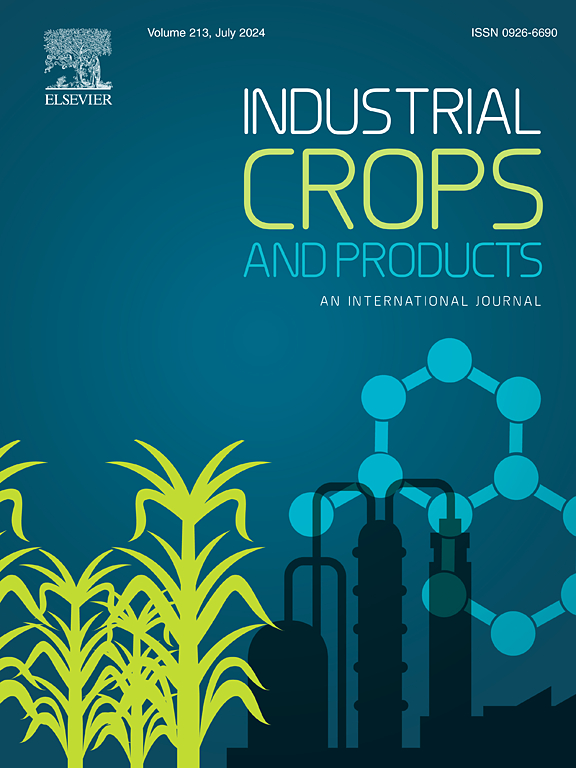Sculpturing Hypericum perforatum L.-rhizosphere with plant-specific and un-specific beneficial rhizobacteria distinctively tailors rhizosphere bacterial community structure to accumulate differential amounts of specialized metabolites
IF 5.6
1区 农林科学
Q1 AGRICULTURAL ENGINEERING
引用次数: 0
Abstract
Domestication procedures or changing habitats of medicinal plants significantly reduces the amount of plant specialized metabolites (PSMs). Previous studies have already shown the direct influence of rhizosphere microorganisms on PSMs. Hence, re-introducing plant-beneficial rhizosphere microorganisms selected from plants' natural habitats back into the rhizosphere during cultivation is expected to increase PSMs production. However, such efforts have not yet been made with Hypericum perforatum L. plants. Consequently, whether PSMs increase, decline, or remain unaffected remains elusive. Nevertheless, previous investigations have demonstrated that despite plant specificity, the PSMs increase after the inoculation of beneficial microorganisms. However, hitherto, the effectiveness of plant-specific (host plant-associated) beneficial rhizobacteria over un-specific (non-host plant-associated) rhizobacteria remains obscure. To fill these knowledge gaps, we first compared the bacterial community structure of wild H. perforatum rhizosphere with the experimental field and found significant discrepancies. We then attempted to reintegrate H. perforatum plants with plant-specific and un-specific beneficial rhizobacteria. The bacterial community assemblages significantly differed between wild and cultivated plants, even after reintegrating plants with plant-specific beneficial rhizobacteria. Nonetheless, plant-specific and un-specific beneficial rhizobacteria have distinctively tailored rhizosphere bacterial community composition. The bacterial species richness (Chao1) and diversity (Shannon index) were significantly highest in the rhizosphere of plants treated with plant-specific beneficial rhizobacteria. Ammonia-oxidizing bacteria (Nitrosomonadaceae_MND1) and Burkholderiales_SC_I_84 were differentially abundant in the rhizospheres of plants treated with un-specific rhizobacteria. Notably, complete ammonia-oxidizing bacteria (comammox Nitrospira), Gemmatimonas, and Vicinamibacteraceae were differentially abundant in the rhizosphere of plants treated with plant-specific rhizobacteria. These taxa were associated with the highest accumulation of PSMs, corroborating the higher expression profiles of pivotal genes regulating their biosynthesis. This study enhances our understanding of how plant-specific and un-specific beneficial rhizobacteria distinctively shape rhizosphere bacterial communities' composition and differentially impact PSMs' biosynthesis, guiding future cultivation of H. perforatum.
求助全文
约1分钟内获得全文
求助全文
来源期刊

Industrial Crops and Products
农林科学-农业工程
CiteScore
9.50
自引率
8.50%
发文量
1518
审稿时长
43 days
期刊介绍:
Industrial Crops and Products is an International Journal publishing academic and industrial research on industrial (defined as non-food/non-feed) crops and products. Papers concern both crop-oriented and bio-based materials from crops-oriented research, and should be of interest to an international audience, hypothesis driven, and where comparisons are made statistics performed.
 求助内容:
求助内容: 应助结果提醒方式:
应助结果提醒方式:


